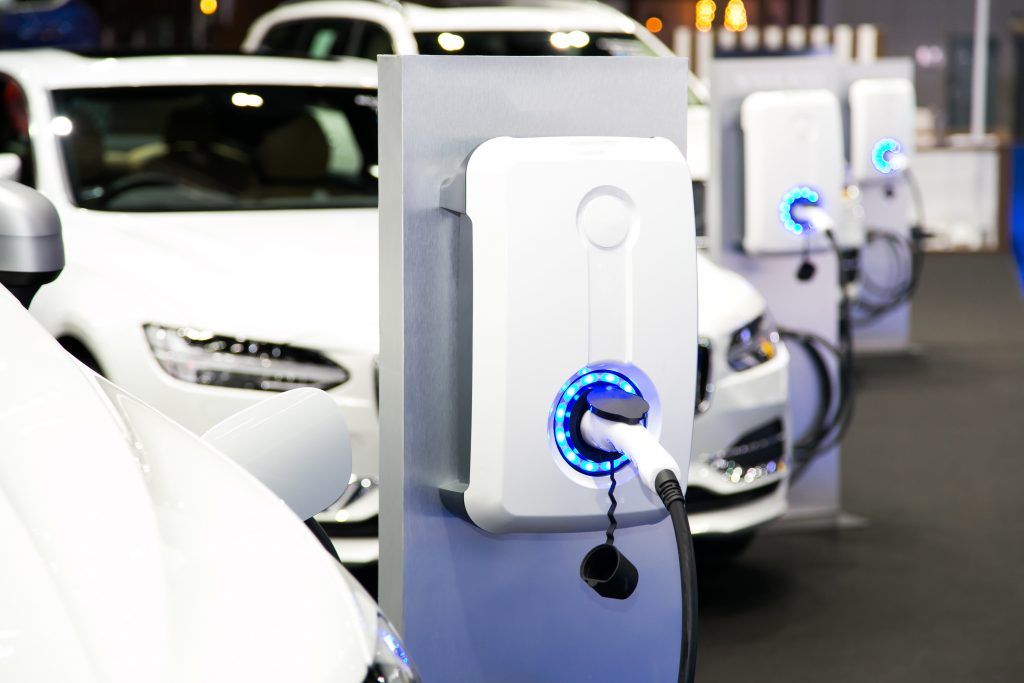Mark Winn, Head of EV Strategy at SMS Plc, provides his thoughts on 2024 trends within the electric vehicle industry.
It’s fair to say that the UK government has made good on its promise of having at least six high-powered EV charge points at every motorway service station in England by the end of 2023. However, this is only a tip of the iceberg, the original pledge is to install 6000 ultra-rapid EV chargers on both motorways and A-Roads across the country by 2035.
The reason is simple – to emulate the ‘petrol and diesel refuelling’ experience that UK drivers have come to expect, and reduce the risk of range or charge anxiety. Our research of UK EV drivers revealed that 40 per cent currently use motorway service stations to charge their EVs, and 68 per cent admit that it is stressful to always have to think about public charging availability when they take long journeys.
It perhaps comes as no surprise that, at COP28, the UK government announced that a further £70 million will be invested into EV chargepoint offerings at motorway services.
Funding is vital, but having the energy where it is needed to power these 6,000 EV chargepoints is critical. This is not going to be without its challenges. The 2023 target (six ultra-rapid chargers per station) alone required roughly between 900kW and 1800kW of extra energy at each site – that’s a significant amount of additional power that needed to be sourced.
As the industry moves further forward with this vital public EV chargepoint rollout – in 2024 and beyond – the need for power/energy in the right places will increase exponentially. Historically, energy demand at motorway service stations is significantly lower when compared to the demand needed to quickly charge vehicles – only needing to power heating, lighting and air-conditioning systems across the retail concessions and fuel forecourts, and at the larger locations enough for the provision of warm food and beverages.
As such the government, National Grid and the Distribution Network Operators (DNO’s) and the wider EV infrastructure industry will need to collaborate to ensure that motorway service stations have the right amount of power for the transition both now and in the future. There is an added complexity in bringing power to service station locations in the more rural areas.
National Grid has been changing the distribution of power within our energy system for a number of years, much of which has gone unnoticed by the majority of the population. Demonstrated by the transition away from high carbon intensive fuel sources, such as Coal and Gas, located centrally up and down the UK, where energy was distributed outwards, to the exponential growth in off-shore wind generation bringing power inwards as it is funnelled throughout the country, and still meeting the increasing demand placed on it through increased consumption.
National Grid and the regional DNO’s will continue to support the decarbonisation transition of transport (and heat), without many of us noticing the change, and powering the switch from fossil fuel to battery electric vehicles.
A drive towards more equitable EV charging and ensuring the UK does not create an ‘EV chargepoint divide” requires investment:
The UK government is working closely with local authorities on the rollout of national EV charging infrastructure. According to ZapMap, in 2023 alone, the industry installed 40% more charge points compared to previous years – almost doubling the national amount.
In 2024 there will be a continued focus on the rollout of public EV charging to ensure that adequate provisions are available across the whole of the UK. And that no region is subject to an ‘EV chargepoint divide’. However, it’s estimated that to reach the 300,000 public chargepoint targets £20bn of investment is needed. The UK government has committed £1.6bn in the form of grants. This includes at least £500m to support local authorities to plan and deliver local public charging infrastructure, as well as a £450m Local EV Infrastructure (LEVI) fund. Members of ChargeUK (the EV Charge Point Operator trade association) have pledged a further £6bn – it’s a positive step. However, that still leaves a potential shortfall of £12.4bn and will still need to be found whether that comes from additional, public, private (or other forms of) investment.
Fairer EV and charging pricing is needed to shift consumer perception:
There’s a common misconception that owning and driving an EV is much more costly than driving a petrol car. It would be fair to say that upfront costs – depending on the make of vehicle – may be more expensive, but when you take into account the running costs (or total cost of ownership) an EV is more affordable in the long term. For example maintenance costs are proving to be lower – there are less consumables in an EV, a drivetrain means no need to worry about replacing engine parts, gear boxes or petrol tanks.
Let’s also not forget that the EV market is still nascent. As car manufacturers transition their production of EVs, that creates an increased supply of vehicles, a wider choice in the market and greater competition, all helping to bring the price of vehicle acquisition down. Added to this, as consumers, commercial and fleet drivers make the switch, and continue to replace electric with electric that creates a buoyant second-hand market. This is critical to making EVs more accessible to a wider group.
Then there’s the cost of EV charging itself. Home charging will always be a smart option for those powering up their EVs – with drivers tapping into lower, smart home energy tariffs and choosing to charge when the cost of energy is low(er). It’s not only more convenient but much cheaper. Charging at off-peak times could mean the cost of a full charge is as little as £20, compared with a full tank of petrol costing on average £80, that is a huge saving.
Home charging will continue to be the first choice for many, it’s clear that public charging is, and must be, an essential part of the wider EV charging ecosystem. Our research uncovered that, in actual fact, very few people rely solely on charging at home, with just 5 percent of UK EV drivers saying they never use public charging stations. Of course, we do have to recognise that not everyone has access to off-street parking or their own driveway.
In 2024, we are likely to see a continued increase in the number of technology partners, software companies, payment solutions and energy providers collaborating to support EV drivers to find a cheaper and more convenient way to charge. Through easy to use SmartPhone and Web Apps, they provide drivers with real-time information, charger availability and journey planning tools showing them the best, and cheapest, places to charge.
However, it must not end there. Organisations such as FairCharge continue to campaign for fair and equitable treatment in the transition. Including the decoupling of the price of electricity from gas (we generate more power from renewable sources than gas) and reducing the high VAT rate related to the cost of public charging. Domestic energy is billed at a mere 5%, whereas public charging is FOUR times higher at 20%. There is no practical reason for this not to change, matching the VAT rate for public charging with the current home electricity rate will result in a fairer cost and increase in EV adoption.
There must be a razor-sharp focus on quality not quantity in 2024:
There is no excuse for providing the public with substandard EV charging solutions. If the EV industry wants to avoid a public backlash then greater due diligence must be applied to EV chargepoint installation. The correct EV charging infrastructure must continue to be deployed and installed – meeting the specific needs of the driver at that location.
Easy access to charging is vital. An EV should be charged at a convenient spot when the driver would naturally take a break in a journey. Or when they reach their destination, such as work, home, leisure, retail location, etc. Added to this, is making sure that public EV charging needs to be in a location that is accessible to all and safe.
Understanding the best time to charge a vehicle is a behavioural change that is needed in the transition to EV. Charging a vehicle should not be intrusive – whether that’s public or home charging.
Ensuring that the right speed (or speeds) of charge points are available is equally important, it shouldn’t be about providing a single type, to address the needs of the EV drivers in many cases it could be a mixture of types – whether Fast, Rapid or Ultra-Rapid Charging, all helping to support the mantra of right location, right time, right speed.
Sustainable public EV charging:
Rather than replicating the visual dominance of a petrol forecourt with high, brightly illuminated canopies and signs, 2024 will see the continued focus of the EV industry to deliver smarter and more sustainable solutions. Clear signage, safe and secure locations with a sympathetic ambience reduces light pollution and provides improved air quality.
And finally …
Hospitality businesses – such as retail and leisure parks, hotels, etc – will begin to take onsite EV charging experiences more seriously in 2024:
It will no longer be a competitive advantage for the hospitality industry to offer onsite EV charging facilities. However, to encourage guests to return or to stay longer onsite, EV charging must be convenient and accessible. A poor experience such as limited availability that leads to longer wait times, or a lack of payment options ultimately means EV driving guests will look elsewhere for their charging needs.








